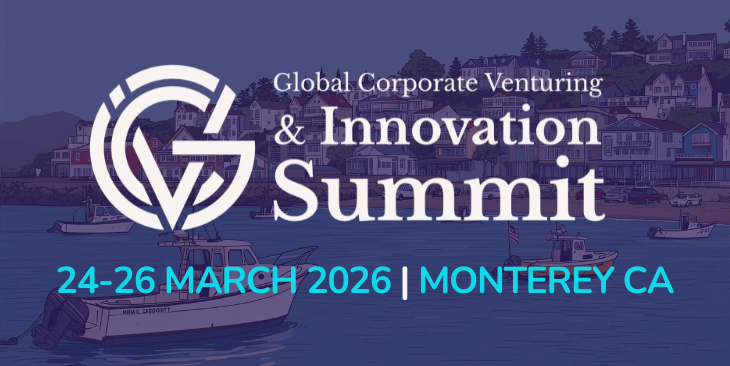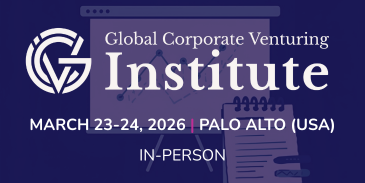Q&A with Gayathri “G” Radhakrishnan, director of venture capital, Micron AI Fund
1, First, just give us a quick overview of who you work for, what you do, and how long you have been doing it.
I work for the corporate venture arm of Micron Technology Inc. Micron is one of the largest memory vendors in the world and the only player that is headquartered in the western hemisphere. I joined Micron in June 2019. In this role, I am focused on investing in innovative startups that are applying artificial intelligence (AI) to fundamentally change the verticals they play in. We invest in manufacturing, mobility, healthcare and agriculture and also core technologies – systems, software and hardware that enable and accelerate the adoption of AI. I have made six investments since I joined across the areas specified.
My exposure to venture comes from my time as an associate at Earlybird Venture Capital, over a decade ago, in Germany – where I was focused on early-stage investments across Western Europe. I am also a Kauffman Fellow. Unlike more traditional VCs, my background spans across disciplines such as product management, product marketing, strategy and corporate development.
2. What attracted you to corporate venture capital (CVC)?
More than any CVC specifically, I was interested in the opportunity to join Micron in this role. As someone with two decades of experience in the industry but predominantly on the software side, I strongly believe that understanding the hardware ecosystem is critical. What better place than Micron, one of the top-three memory vendors in the world? As AI begins to take root as an important technology driver for this decade and as Moore’s law comes to an end, memory will have a big role to play in the compute architecture.
Also, having had the opportunity to be at an institutional VC firm (Earlybird Venture Capital) and having worked at both large corporates like Dell and Corning and early-stage startups, I felt that I could add value to Micron in this role while also challenging and stretching myself on the hardware technology front.
3. What have been your greatest successes at your unit?
I believe I am a work in progress. I tend to celebrate little victories and move on. Talking about little victories, given that my time at Micron Ventures is relatively short, I am quite excited about the five investments that I did this year in the span of February to September 2020. I believe that each of these companies has the potential to significantly impact the sectors that they play in. Few of the companies, I can share information at this point
Nexar – an Israeli startup that applies AI in the automotive arena, has come up with new and interesting ways of leveraging the data coming from dashcams in a car. Their underlying full-stack AI platform combined with the data stream is unlocking a new data economy for automotive and street-level data. They also have the potential to impact multiple areas of innovation from autonomous driving to edge compute.
Drishti – named by Nvidia as a top-five AI company in the US during this year’s GTC, Drishti has the ability to positively impact Manufacturing. They not only add visibility to the manufacturing process but also generate a dataset that was historically hard to access through digitization. They also help improve overall productivity and quality in a manufacturing line while empowering the line associate.
Taranis – With sales traction globally, Taranis is improving crop yield for farmers all over the world. Early detection of disease in crops can minimize yield loss significantly for farmers, a process that is extremely manual today. Given the population growth and reduction in arable land, maximizing crop yields is extremely important today and for the future. Taranis is actively addressing this problem for commodity crops today.
All of these investments have the potential to not only disrupt the sectors they play in but fundamentally help improve quality of life. I hope that investments like these will in the future define my success based on their contribution and impact on society at large.
4. What have been your biggest challenges?
My single biggest challenge has been not enough time in the day! As trite as it sounds, at Micron Ventures we are looking at four big verticals – automotive, manufacturing, healthcare and agriculture and also core AI technology stack. Each of these domains is not only large but come with their own nuances. Understanding the intricacies of the sector, understanding the buying power and building a network of experts is critical. There are so many interesting startups in all these sectors and I still struggle to come to terms with how limited my time is between meeting startups, diligence and portfolio support and assistance.
5. What is your main professional ambition for the future?
I believe startups are the future. Today’s startups have the power to be the next big industry titan. I would like to be in a position to guide these startups either behind the scenes as an investor or as an active participant as an operator/ CEO. In my career, I have alternated between highly hands-on and operational roles such as product management to non-operational but nevertheless impactful roles such as strategy and corporate development. As someone who has worked at really young startups and at Fortune 500 companies and in the capacity of an acquirer, I believe I can add value to a startup guiding them through their formative years to maturity and exit and beyond.
6. What do you think all CVCs could do better to make it a stronger industry?
By now it is clear that CVCs are here to stay and a lot of the stigma around CVCs are slowly dissipating. Below are a couple of areas that I believe CVCs can do better and shine
Consistency: the biggest issues startups and traditional VCs have with CVCs is lack of consistency and follow through on investments. Traditional VCs are disciplined about allocating for follow on rounds. This may not always be a common practice at CVCs. So, when the market or strategic winds change for the corporate, a lot of CVCs stop investing. This results in a bad reputation for the entire sector. I hope that Corporates do not start venture arms lightly but put the right amount of thought and structure to ensure ongoing support of the startup ecosystem.
Diversity & Inclusion: I have noticed better female representation in CVCs than traditional VCs and recently found data to back up this observation – 15.9% of partners and executives in CVC are women versus 9.65% among all VCs. We as CVCs can continue to build on this representation to show that investing in diversity both at the team level and the portfolio level is not only good for CSR but also the right and responsible thing to do financially.
7. And, finally, for colour, what did you do prior to CVC or in your spare time?
In my spare time – which is few and far between after work and family, I love to read (I do not discriminate across genres ), travel (which I miss tremendously), volunteer with my kids (virtual these days) and also practice a south Indian classical dance form called Bharatanatyam. I had the honour of doing my dance recital – a graduation ceremony with the accompaniment of live musicians from India in front of a live audience of 300 last year (you can call it my mid-life crisis!). In the current age of technology, this 2000-year-old dance form teaches me mental & physical discipline and the pursuit of joy and balance through artistic expression.









